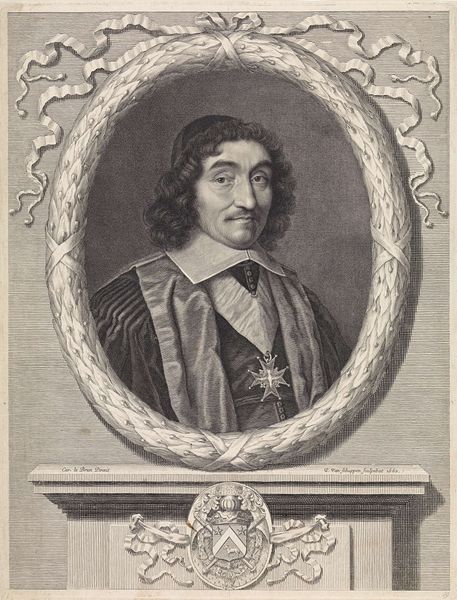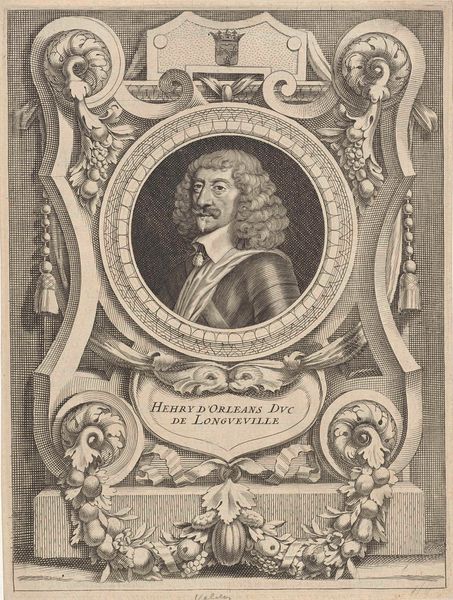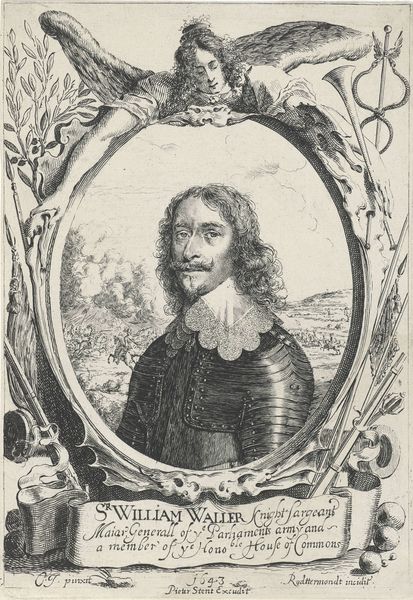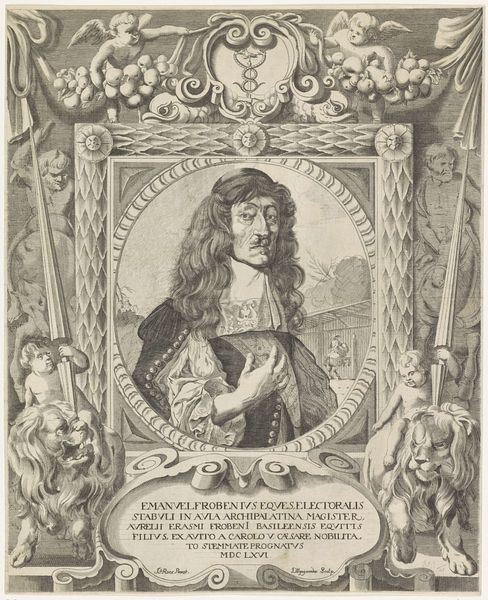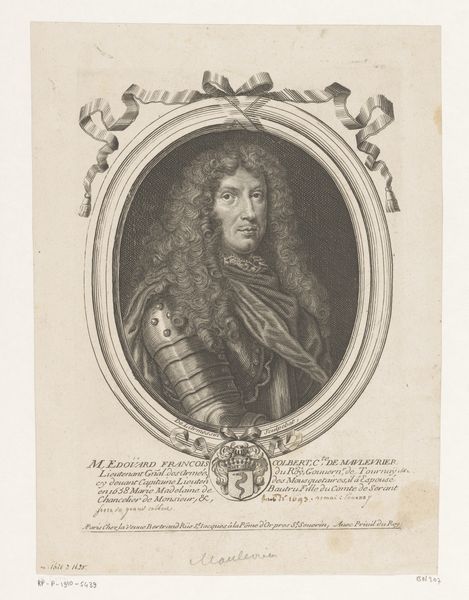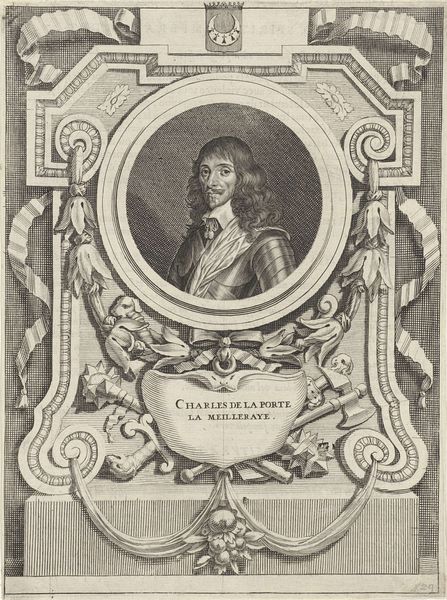
print, engraving
#
portrait
#
baroque
# print
#
old engraving style
#
engraving
Dimensions: height 303 mm, width 192 mm
Copyright: Rijks Museum: Open Domain
Curator: Before us we have Pieter de Jode the Younger's "Portret van Valentinus Heider," an engraving created in 1649. The subject’s self-satisfied expression really stands out! Editor: Yes, that smirk feels loaded, doesn't it? Looking at Heider, framed by all that ornate, Baroque excess, it's difficult not to see the inequities of the era. What positions of power allowed for the funding and making of this portrait? Curator: True. And note the use of line. De Jode's expert handling of engraving captures a likeness but it also speaks to the symbolic nature of portraiture at the time. Consider how his gaze confronts us directly; and then you are also subtly made aware of the sitter’s high status with this depiction. Editor: Exactly! Those lines form the man but also build the cage of his world. The text itself is crucial here – listing all Valentinus Heider’s honorifics as “Liberarum Imporij Civitatum,” noting that he served various constituencies, finally being named a “Legatus”, it details who has the authority to dictate and represent the world. Curator: I'm interested in the formal choices regarding framing. He is positioned within an oval shape bordered by classical motifs and inscriptions. This design functions to isolate and elevate him, underscoring his prestige. Also, that light catches the curl of his hair. Beautiful! Editor: A gilded cage! How interesting to view those ‘beautiful curls’ not just as ornamentation, but also to note how, across time, different ideas and images around masculinity become naturalized in portraiture, here through wigs as objects of both style and class, even control. Curator: But one has to respect the composition, the graphic clarity De Jode achieves. And to be fair, the inclusion of his familial coat-of-arms seems to align this piece more with lineage and ancestry rather than explicit economic or political power. Editor: It is important to remember that ancestry is linked to land ownership, privilege and a whole slew of benefits that were often unfairly dispersed. So I can agree with the importance of reading the composition closely—for me though, it tells of societal tensions alive then, and ongoing now. Curator: Thank you, this dialogue has made me consider what it means to depict power using line. Editor: And it seems fitting to me that a 'portrait' also holds within it our anxieties about inequality and questions about representation itself.
Comments
No comments
Be the first to comment and join the conversation on the ultimate creative platform.


